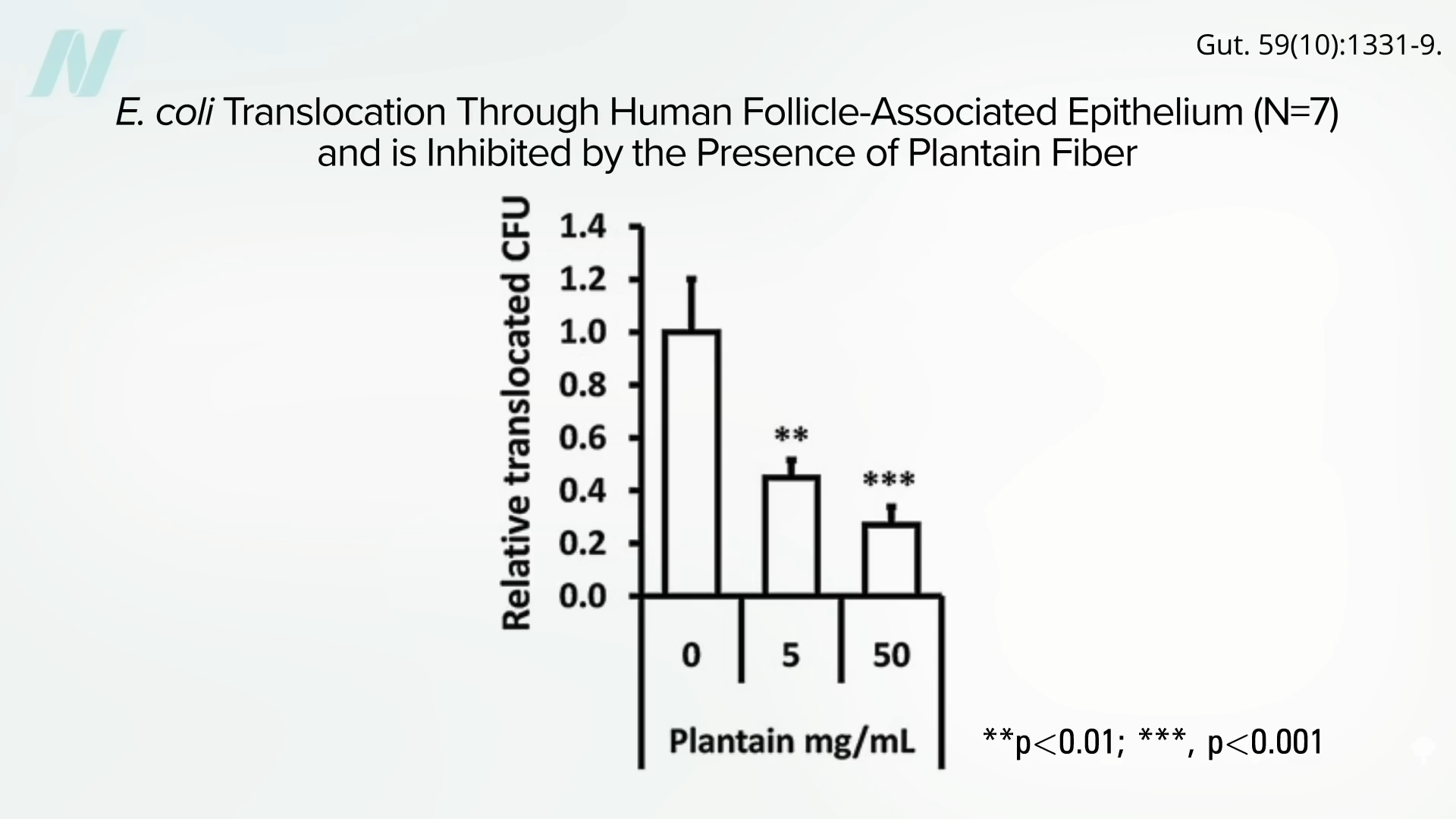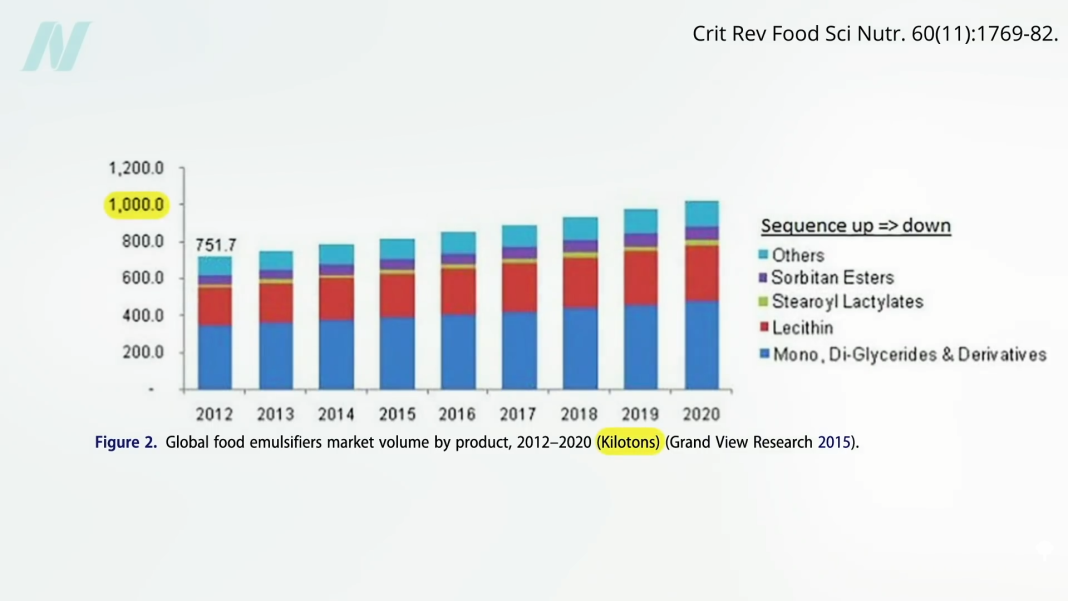Emulsifiers are probably the most extensively used meals components. What are they doing to our intestine microbiome?
When grocery purchasing as of late, except you’re sticking to the produce aisle, “it’s practically unimaginable to keep away from processed meals, notably within the consumption of a typical Western food regimen,†which is characterised by inadequate plant meals, an excessive amount of meat, dairy, and eggs, and a variety of processed junk, “together with elevated publicity to components because of their use in processed meals.â€
The substitute sweetener sucralose, for instance, which is offered as Splenda, “irrefutably disrupts the intestine microbiome at doses related to human use†and “induces glucose intolerance.†In different phrases, it could make our blood sugars worse as a substitute of higher. It’s comparatively straightforward to keep away from synthetic sweeteners, however “it could be way more difï¬cult to keep away from ingestion of emulsiï¬ers…as a result of they’re generally added to all kinds of meals throughout the trendy Western food regimen.†In actual fact, “emulsifiers are probably the most extensively used components,†and “most processed meals include a number of emulsifiers that permit such meals to take care of desired textures and keep away from separation into distinct components (e.g, oil and water layers).†We now eat emulsifiers by the megaton yearly, thanks to a multibillion-dollar trade, as you may see under and at 1:03 in my video Are Emulsifiers Like Carboxymethylcellulose and Polysorbate 80 Protected?.
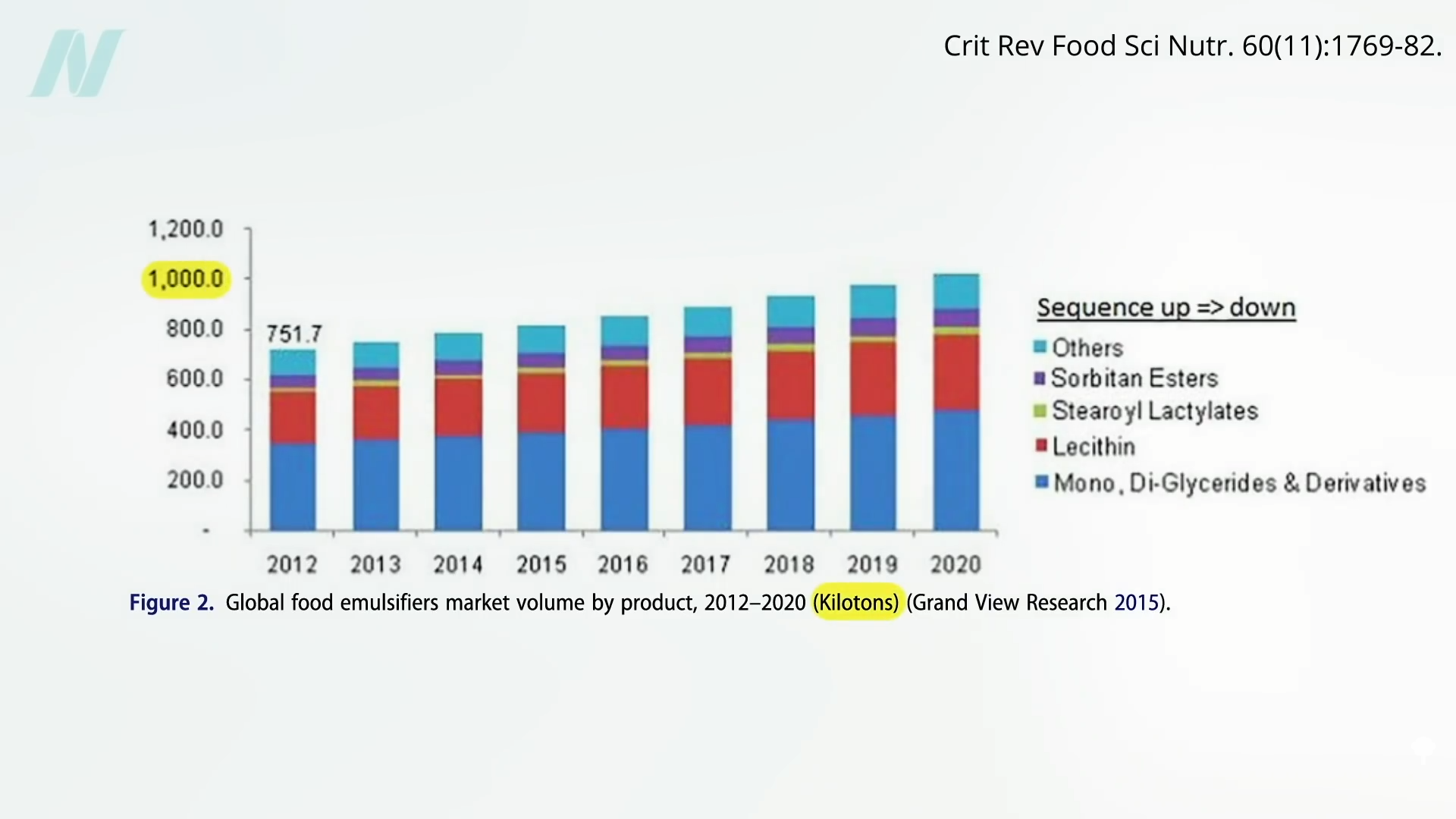 Emulsifiers are generally discovered in fatty dressings, breads and different baked items, mayonnaise and different fatty spreads, sweet, and drinks. “Like all approved meals components, emulsiï¬ers have been evaluated by danger assessors, who take into account them secure. Nonetheless, there are rising issues amongst scientists about their potential dangerous results on our intestinal limitations and microbiota,†by way of inflicting a leaky intestine. As nicely, they may probably “improve the absorption of a number of environmental toxins, together with endocrine disruptors and carcinogens†current within the meals.
Emulsifiers are generally discovered in fatty dressings, breads and different baked items, mayonnaise and different fatty spreads, sweet, and drinks. “Like all approved meals components, emulsiï¬ers have been evaluated by danger assessors, who take into account them secure. Nonetheless, there are rising issues amongst scientists about their potential dangerous results on our intestinal limitations and microbiota,†by way of inflicting a leaky intestine. As nicely, they may probably “improve the absorption of a number of environmental toxins, together with endocrine disruptors and carcinogens†current within the meals.
We all know that the consumption of ultra-processed meals might contribute to weight acquire. More healthy, longer-lived populations not solely have low meat consumption and excessive plant consumption, however in addition they eat minimally processed meals and “have far much less persistent illnesses, weight problems charges, and stay longer disease-free.†Based mostly on a variety of preclinical research, it could be that the emulsifiers present in processed meals are taking part in a task, however who cares if “emulsifiers make rats acquire weightâ€? Once we learn that “emulsiï¬ers can trigger hanging modifications within the microbiota,†they aren’t speaking concerning the microbiota of people.
Usually, mice are used to review the influence on the microbiome, however “only some p.c of the bacterial genes are shared between mice and people.†Even the intestine flora of various strains of mice will be significantly completely different from one another, so if we will’t even extrapolate from one kind of mouse to a different, how are we alleged to translate outcomes from mice to people? “Remarkably, there has been little examine of the potential dangerous results of ingested…emulsiï¬ers in people.â€
Take lecithin, for instance, which is “maybe greatest generally known as a key element of egg yolks.†Lecithin was discovered to be worse than polysorbate 80 by way of permitting micro organism to leak by means of the intestine wall into the bloodstream. Nonetheless, it’s but to be decided whether or not lecithin consumption in people causes the identical drawback. “There’s definitely a paucity within the information of human trials with the consequences of emulsifiers in processed meals,†however we at the least have information on human tissue, cells, and intestine flora.
A examine was titled: “Dietary emulsifiers instantly alter the human microbiota composition and gene expression ex vivo potentiating intestinal irritation.†Ex vivo means outdoors the physique. Researchers inoculated a synthetic intestine with contemporary human feces till a secure tradition was established, then added carboxymethylcellulose (CMC) or polysorbate 80 (P80), leading to boosts in proinflammatory potential beginning inside someday with the carboxymethylcellulose and throughout the first week with polysorbate 80, as you may see under and at 3:39 in my video.
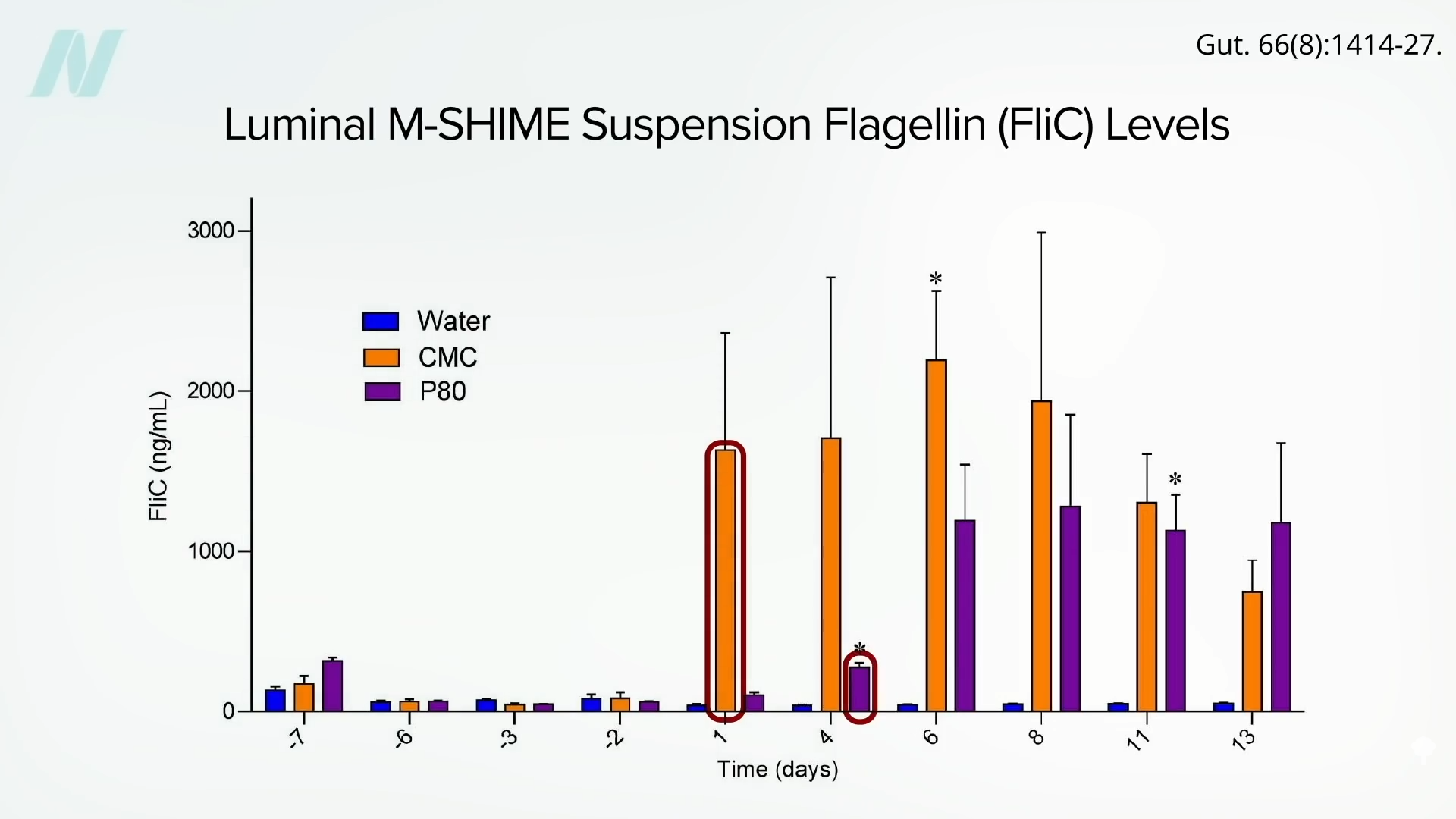
“This strategy revealed that each P80 and CMC acted instantly upon human microbiota to extend its proinflammatory potential…†When researchers then examined the impact of those emulsifiers on the protecting mucus layer in petri dish cultures of human intestine lining cells, they discovered that they will partially disrupt the protecting layer. As you may see under and at 4:00 in my video, the inexperienced staining is the mucus. Each emulsifiers minimize down the degrees.
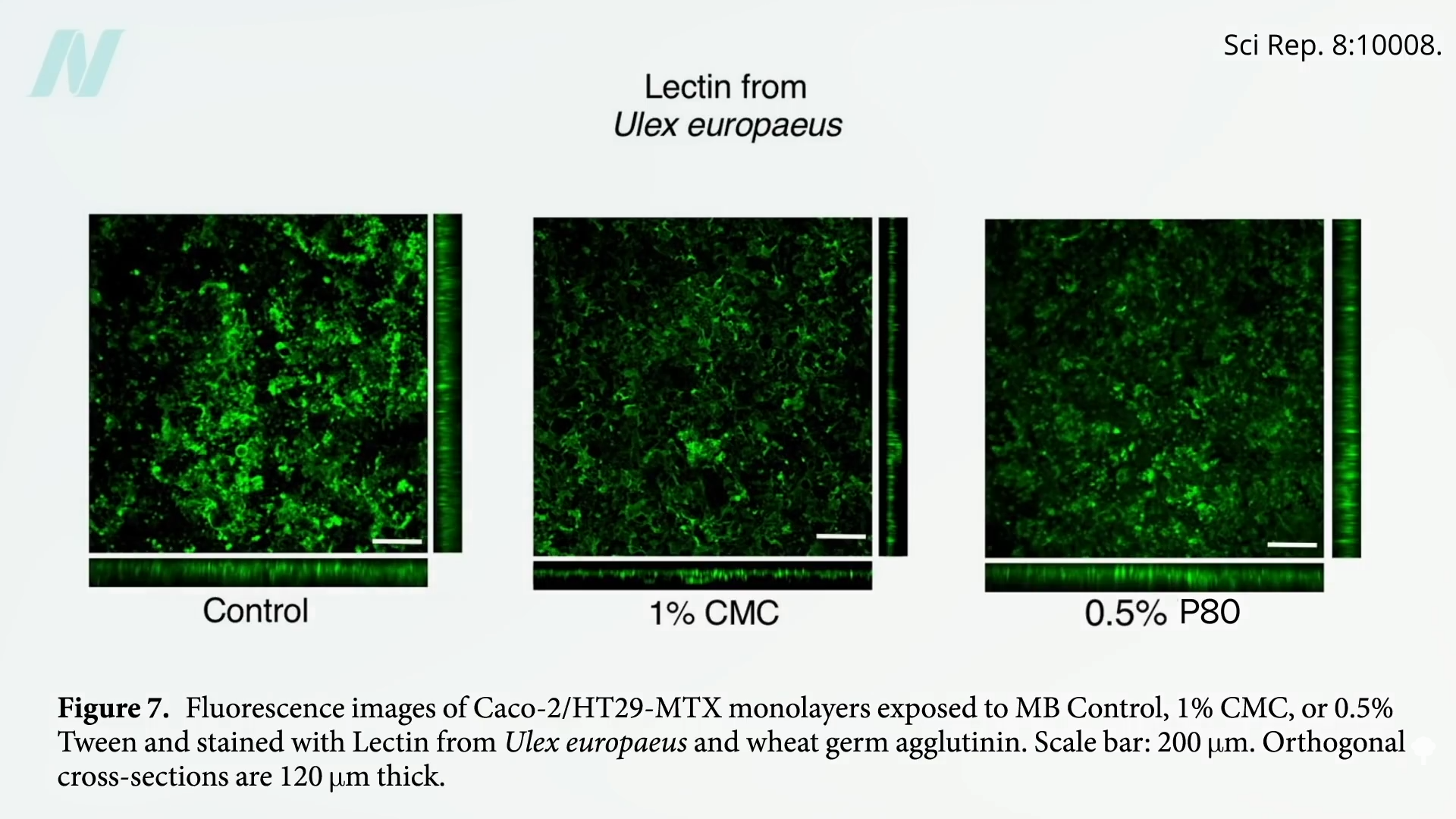
Nonetheless, this examine and the final each used emulsifier concentrations that have been far in extra of what folks would possibly sometimes get day-to-day.Â
“Translocation of Crohn’s illness Escherichia coli throughout M-cells: contrasting results of soluble plant fibres and emulsifiers†might be the examine that raised the best potential concern. The researchers surgically obtained cells, in addition to precise intestinal wall tissue, and located that polysorbate 80 might double the invasion of E. coli by means of the intestinal lining tissue, as proven right here and at 4:27 in my video.
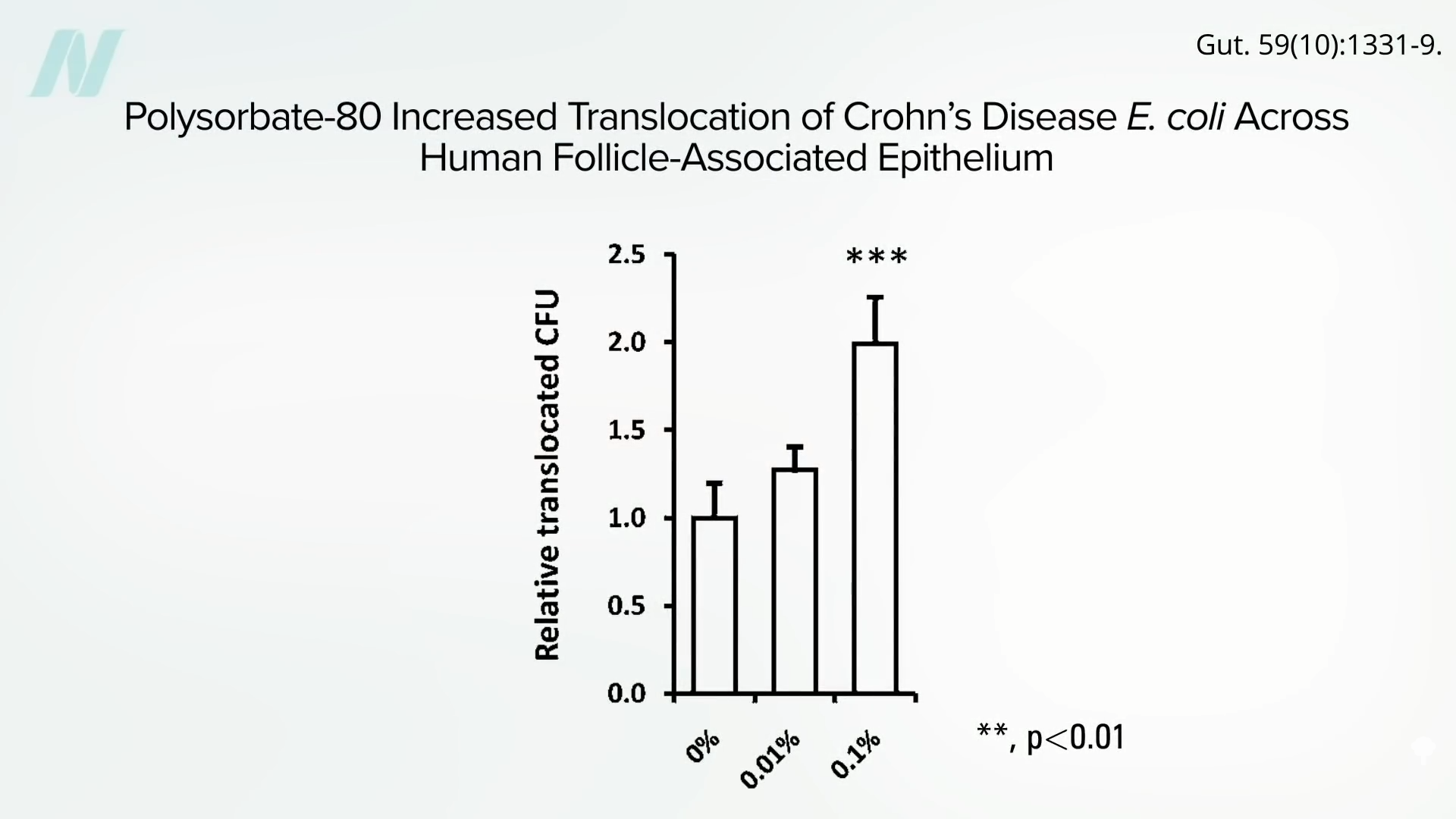 In distinction, including fiber—on this case, fiber from plantains—might seal up the intestine wall tissue twice as tightly, as seen under and at 4:33.
In distinction, including fiber—on this case, fiber from plantains—might seal up the intestine wall tissue twice as tightly, as seen under and at 4:33.
